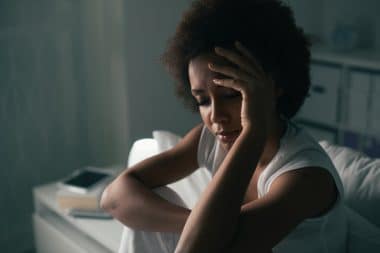Sleep apnea is a type of sleep disorder in which a person’s breathing pauses and restarts, repeatedly. These pauses can vary in duration and may occur dozens of times in an hour. As a result, sleep quality is poor, causing the person to wake up tired, even after sleeping all night. In most cases, sleep apnea is a chronic condition.
The two most common types are obstructive and central sleep apnea. Obstructive sleep apnea is a condition in which the airway collapses, inhibiting a person’s ability to breathe. Central sleep apnea is a condition in which the person’s brain fails to transmit the necessary signals to the muscles responsible for breathing.
Symptoms
Symptoms of both types are similar and known to overlap, making it difficult for a doctor to determine which type a person has. The most common symptoms include:
– Hypersomnia (excessive sleepiness)
– Snoring (most prominent in obstructive sleep apnea)
– Breathing cessation
– Abrupt awakenings during the night (often an indicator of central sleep apnea)
– Insomnia
– Attention problems
– Morning headache
– Sore throat or dry mouth upon awakening
It should be noted that not everyone with sleep apnea will snore. Additionally, many people who do snore don’t consider it a serious problem. In any case, if you are known to snore loudly, it would be wise to see your doctor. This is especially important if your snoring is interrupted by periods of silence.
Causes
In the case of obstructive sleep apnea, the airway is blocked due to the relaxation of the muscles surrounding the throat. As a result of the inability to get a full breath of air, oxygen levels in the blood go down. The brain senses this problem and awakens the person, allowing them to reopen the airway, producing a snorting or choking sound. Although this process may occur many times each hour, it occurs so quickly that most people won’t remember it. These constant interruptions impair one’s ability to achieve a deep and restful sleep, leaving them fatigued during their waking hours.
Central sleep apnea is less common and occurs when the brain fails to send the required signals to the same group of muscles. When this happens, the affected person may have difficulty sleeping or staying asleep, often awakening short of breath. As with obstructive sleep apnea, sleepiness and snoring are common, although people who have it are somewhat more likely to recall waking up repeatedly. Heart failure is the leading cause of central sleep apnea, followed by stroke.
Treatment
Mild cases of obstructive sleep apnea may be treated with simple lifestyle changes, such as quitting smoking and losing weight. If this doesn’t fix the problem or if the problem is more severe, there are some other treatment options. Some of them involve masks or other devices that are designed to regulate the air pressure delivered into the nose as the person sleeps. There are also devices available to bring the jaw forward, opening up the throat. In the worst cases, surgery to remove troublesome tissue or reposition the jaw may be required. In life-threatening situations, a tracheostomy is often the only form of treatment that will work.
For central sleep apnea, any associated medical problems may have to be treated, including neuromuscular or heart conditions. In some cases, the proper treatment of heart failure can actually eliminate central sleep apnea. Supplemental oxygen may be used, as well as some of the pressurized masks used in treating obstructive sleep apnea. There are also devices specifically designed for the treatment of central sleep apnea.
If you’re having trouble sleeping, the best thing you can do is talk to your doctor. Loss of sleep can be very dangerous when driving or handling machinery. Your doctor is the only one who can say with any certainty whether your drowsiness is due to sleep apnea or some other sleeping disorder.







